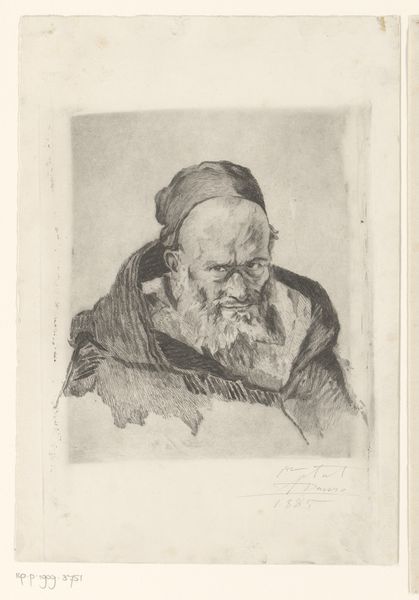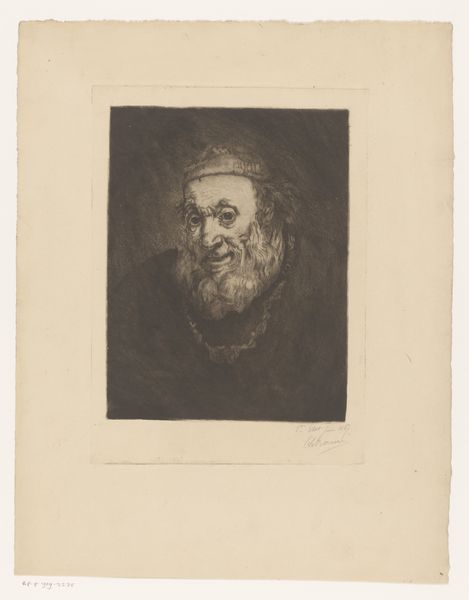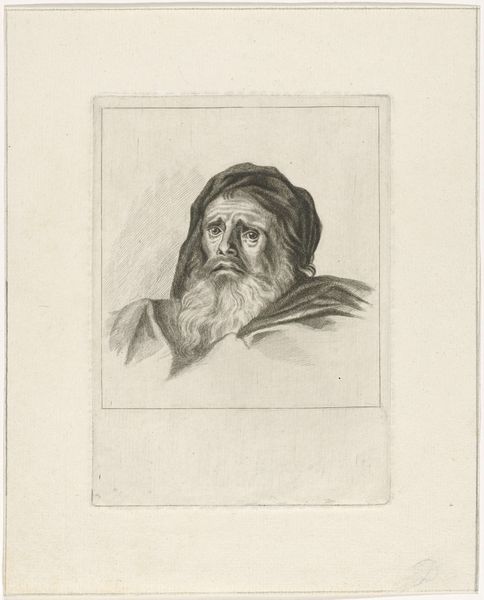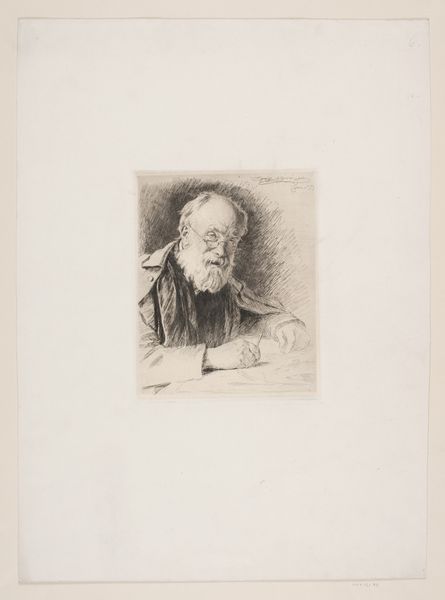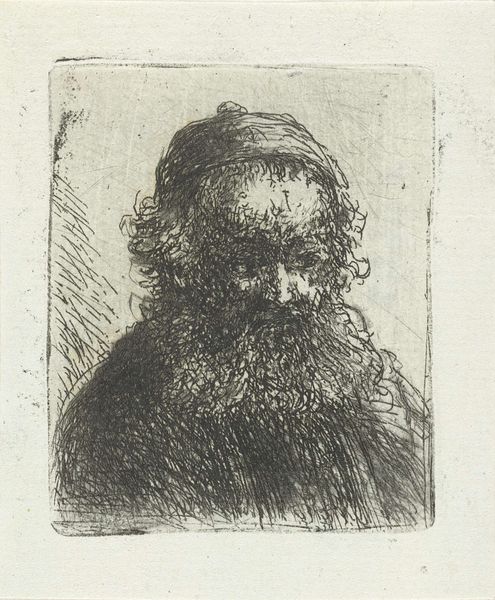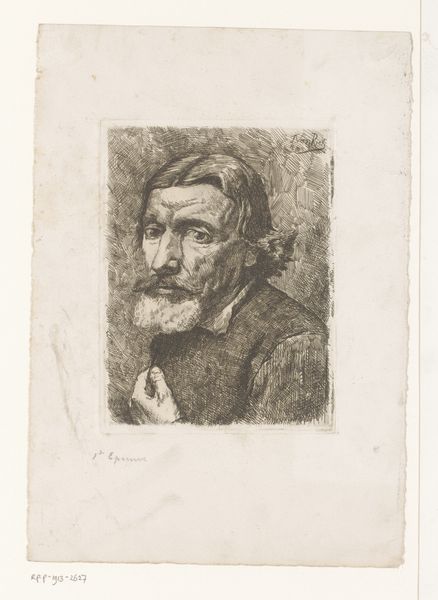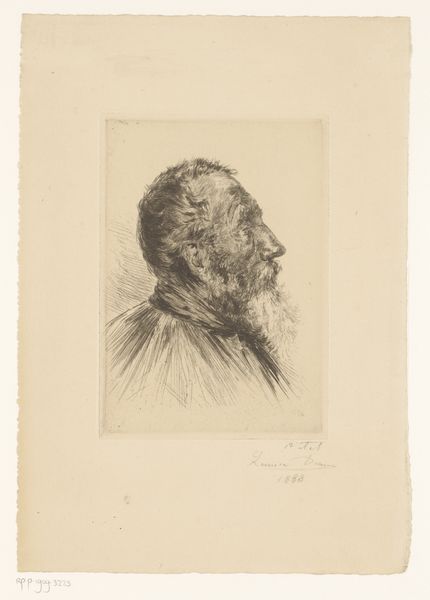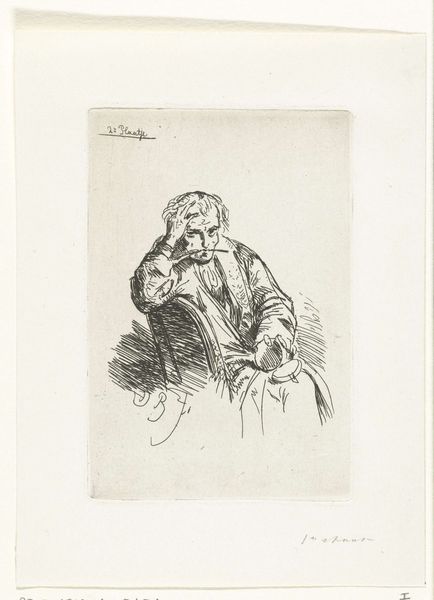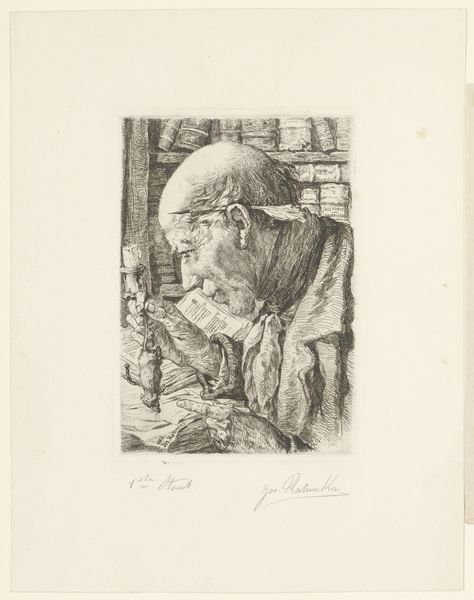
etching
#
portrait
#
etching
#
pencil drawing
#
genre-painting
#
history-painting
#
academic-art
#
realism
Dimensions: height 107 mm, width 147 mm
Copyright: Rijks Museum: Open Domain
Curator: Here we have "Lezende bebaarde man met bril," or "Reading Bearded Man with Glasses," an etching by Fr. van Groeningen, dating from between 1850 and 1910. Editor: My immediate sense is one of introspection. The hunched posture and furrowed brow suggest a deep engagement, perhaps even struggle, with the text. There is a certain solemnity in the greyscale tones too. Curator: Absolutely. The academic art style situates this piece within a historical context where intellectualism and the pursuit of knowledge were highly valued. Considering the timeframe, we might explore this figure in relation to the burgeoning intellectual and political movements of the late 19th century. His engagement feels like more than just a pastime. Editor: I'm drawn to the symbolic weight of the glasses, perched on his nose, acting as a mediator between him and the world of the written word. They suggest a quest for clarity, but also a dependence on constructed knowledge. It speaks volumes about how we access and interpret information. The etching technique adds to the somber mood. The fine lines seem to etch the passage of time onto his face. Curator: Indeed. The realism underscores the idea of knowledge as a burden, or at least a weight. The figure seems burdened not just by age, but also by the very act of reading and attempting to understand. Editor: The act of reading depicted could also symbolize something like resilience. We see a man wrestling with concepts, trying to derive meaning from text. He's physically supporting his head with his hand and seems wearied, but his intense focus implies a refusal to give up. Curator: Perhaps Van Groeningen's choice to create a realistic etching reinforces ideas of social critique. As the popularity and impact of realist pieces grew during the late 19th century, more artists employed realism in ways that could make powerful statements about class and gender. The subject and style, viewed through this lens, allow viewers a sense of the reading man’s engagement and perhaps frustration with society during his own period. Editor: That’s interesting. Considering all of that, the work becomes almost like a secular icon—an exploration of inner conflict made visual. I appreciate seeing how so much complex interpretation can emerge from such a simple presentation. Curator: It highlights the beauty and meaning behind moments that often get overlooked in everyday life. It prompts us to consider who gets remembered and what contributes to a meaningful existence.
Comments
No comments
Be the first to comment and join the conversation on the ultimate creative platform.
